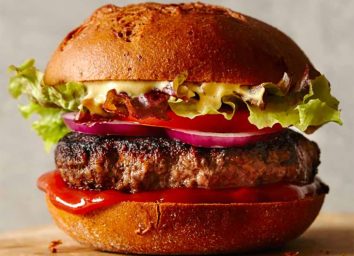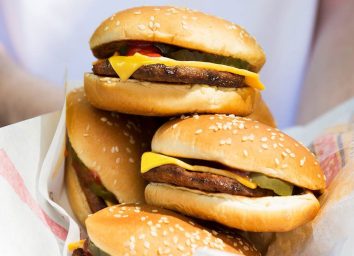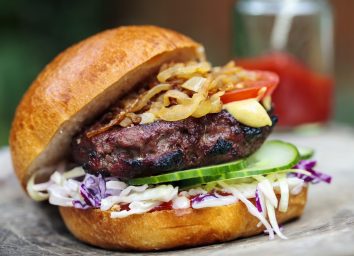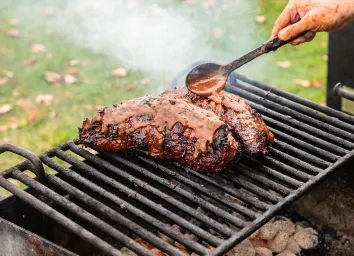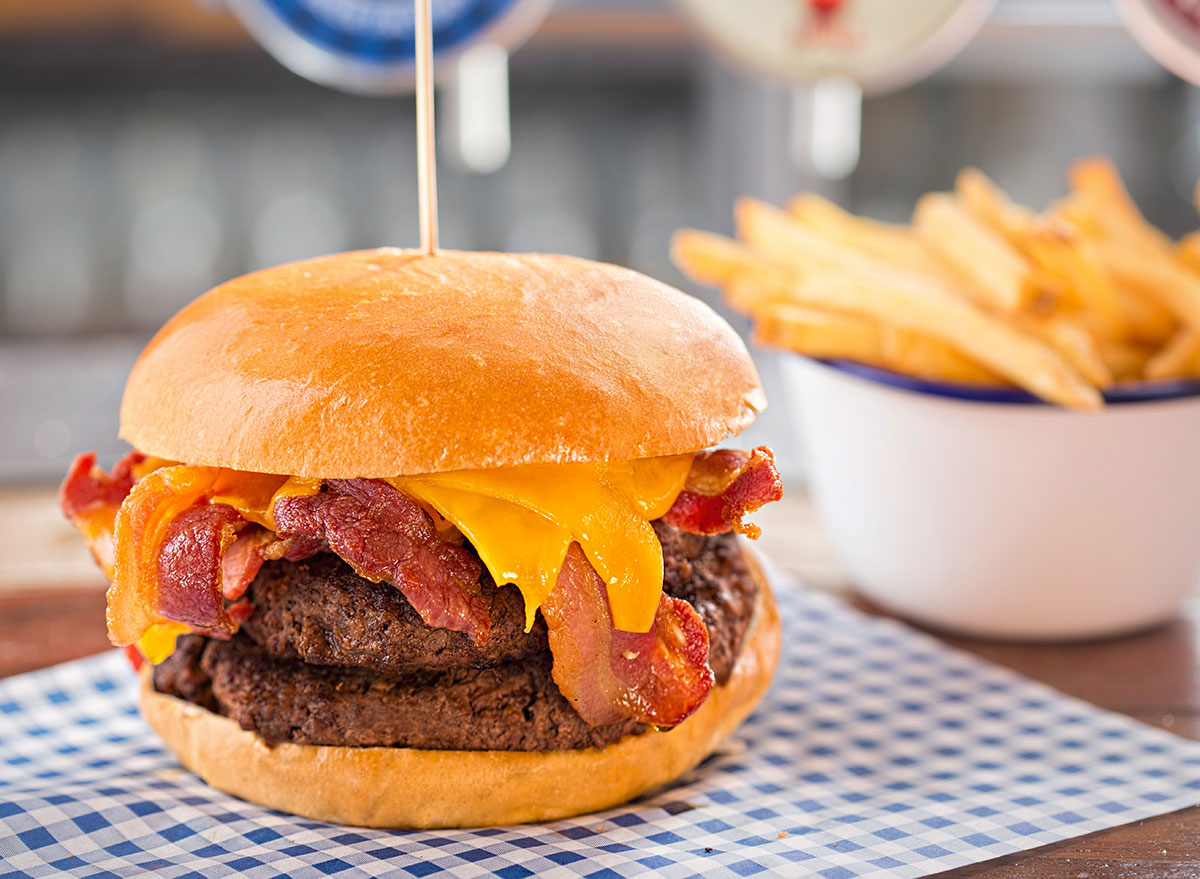
Sure, you’ve been cooking burgers until the cows came home, but have you nailed the perfect grilled patty?
If you’re grilling that ground beef, well, that’s burger mistake #1. Professional chefs know that the best burgers are pan-fried or cooked on a flat-top grill, not on grill grates. And we’d bet you’re eating your burger all wrong, too, if you’re grabbing it with thumbs on the bottom bun and four fingers on top.
To correct these and other misinterpretations of proper burger grilling and eating, we consulted New Zealand-born chef and burger expert Daniel Wilson, founder of Australia’s Huxtaburger restaurants and author of The Burger Lab: The Art and Science of the Perfect Burger.
Here’s how to build the best-tasting burger, according to Wilson. And for more tips, This Secret Grilling Trick Will Blow Your Mind.
Use quality meat
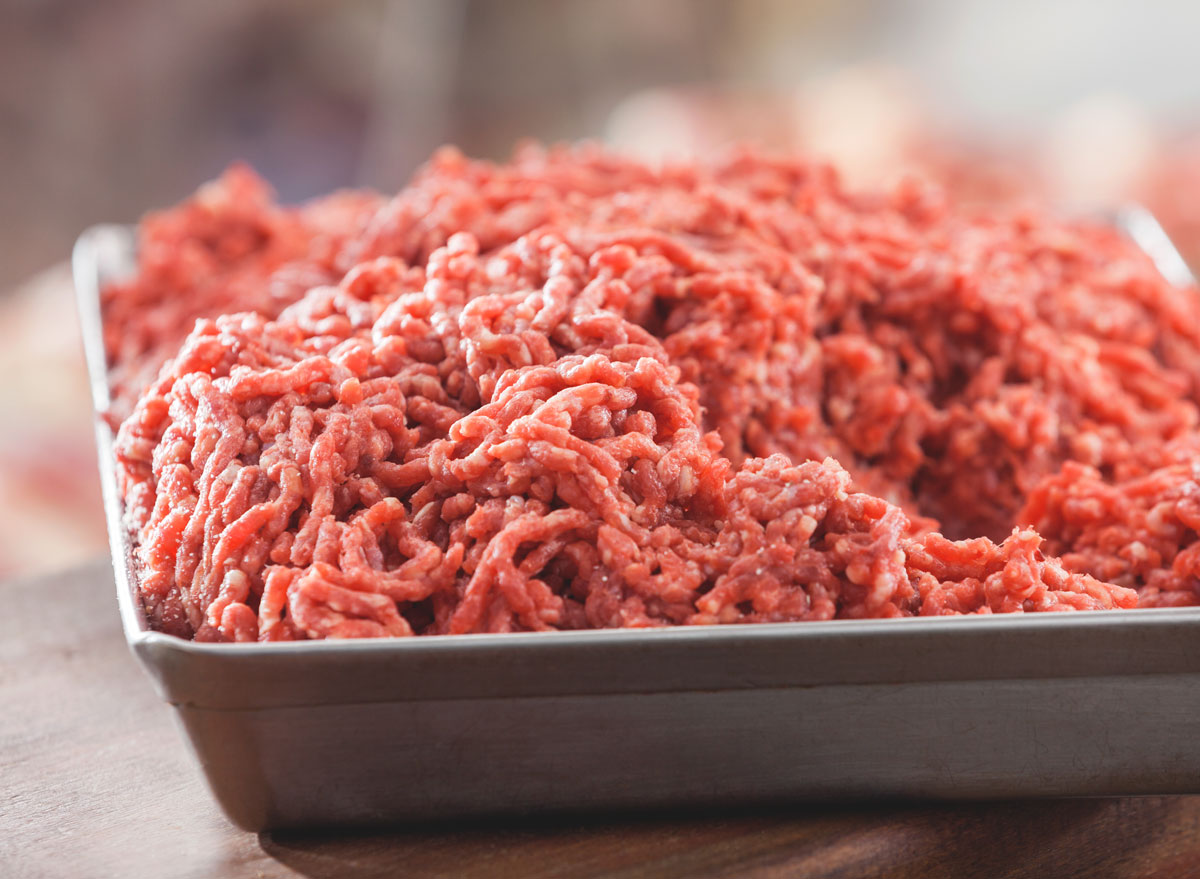
“Use the best beef you can. I prefer grass-fed beef that’s 80% lean and 20%
fat. Fat keeps meat moist and helps raise the temperature while cooking, which promotes the Maillard reaction (browning) and caramelization,” Wilson says. “Do not adulterate your beef with fillers like breadcrumbs, onion, and spices. You want to taste the meat. I add only salt and pepper.”
The pre-ground hamburger meat your grocer sells may be convenient, but oftentimes, it’s made up of low-quality beef scraps. To ensure you’re using the highest-quality (read: best-tasting) beef, pick out a fresh cut and ask the butcher to grind it and wrap it up. (We like sirloin, chuck, or brisket for their fat to lean meat ratio and delicious flavor.) You can also grind your meat at home. If you have a KitchenAid mixer, all you need is a grinding attachment, one of the greatest investments a burger hound can make. Make sure both the attachment and the beef are very cold and grind on the coarsest setting to ensure nothing sticks.
Want a leaner burger that’s still delicious and juicy? Buy grass-fed beef. It’s more expensive than conventional beef, but it naturally carries fewer calories, and it carries more conjugated linoleic acid, a type of fat that reduces heart disease and cancer risk.
Form the patties with care
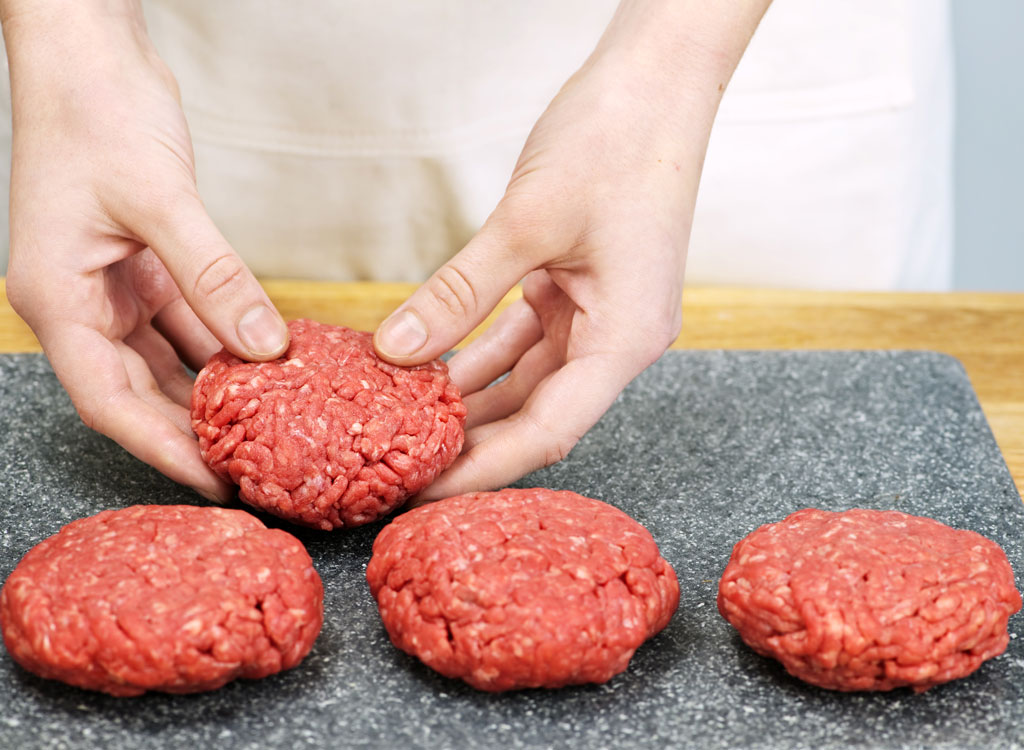
To ensure all of your burgers will be done at the same time, they need to be the same size and shape. To make sure each patty is the same size, use a food scale. And to make your meat discs the same shape and thickness, try using a peanut butter jar lid as a burger mold. If you want to make snack-size sliders, a small cookie cutter or a Mason jar lid works wonderfully. And if you prefer your burgers well done, you can preserve some of the juices by molding thinner patties, which will allow the meat to cook faster, explains Rick Browne, author of The Ultimate Guide to Grilling.
It’s also best to mold the burger patties while they’re still cold. Up until you’re ready to mold your patties, keep your meat in the refrigerator. When you mold warm beef, the fat will often separate from the meat, leaving you with less flavorful, juicy burgers. For the same reason, if the grill isn’t quite ready to use after you’ve shaped your patties, store them in the fridge.
And to ensure that more of the meat winds up on your grill than stuck to your hands, dip your mitts into cold water before molding your meat. The heat from your hands can make the ground beef stickier and more difficult to shape into patties.
Finally, you’ll want to salt the meat at the last moment. Salt the meat before you form the patties, and the sodium chloride will break down protein strands, creating a dense texture closer to sausage than the loose, tender ideal you’re looking for. Always salt your burgers just seconds—not minutes—before grilling.
Toast the bun
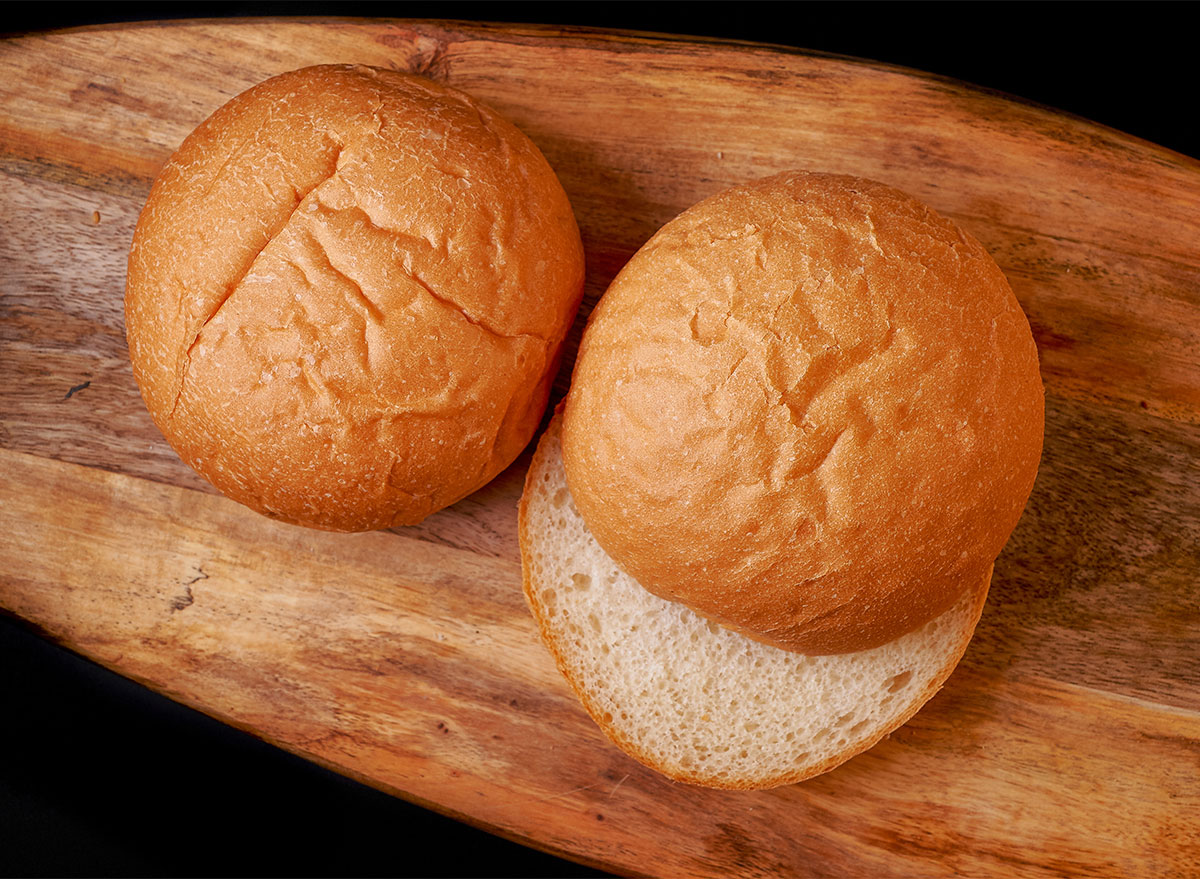
Juicy burgers on an untoasted, squishy bun is a guaranteed trip to sog city—and possibly your dry cleaner. To keep your bun from disintegrating beneath a pool of fat, pop it into the toaster. Placing your tomato and lettuce under the burger instead of on top can also act as a meat juice roadblock, protecting your bun.
“The bun’s job is to hold everything together. So don’t use a big bun that’ll overpower the flavor of the insides. I like to brush the bun with clarified butter, the butterfat you get when you melt unsalted butter and skim off the foamy milk proteins,” Wilson says. “Then, toast it in a pan or on a flat grill until it’s golden and crisp. That also steams the bread, which allows the bun to compress around the inside ingredients. Toasting creates a crisp barrier so that the sauces and meat juices don’t make the bun soggy.”
And while you’re cooking, be sure to avoid these 17 Worst Burger Grilling Mistakes.
Flip the burger—once
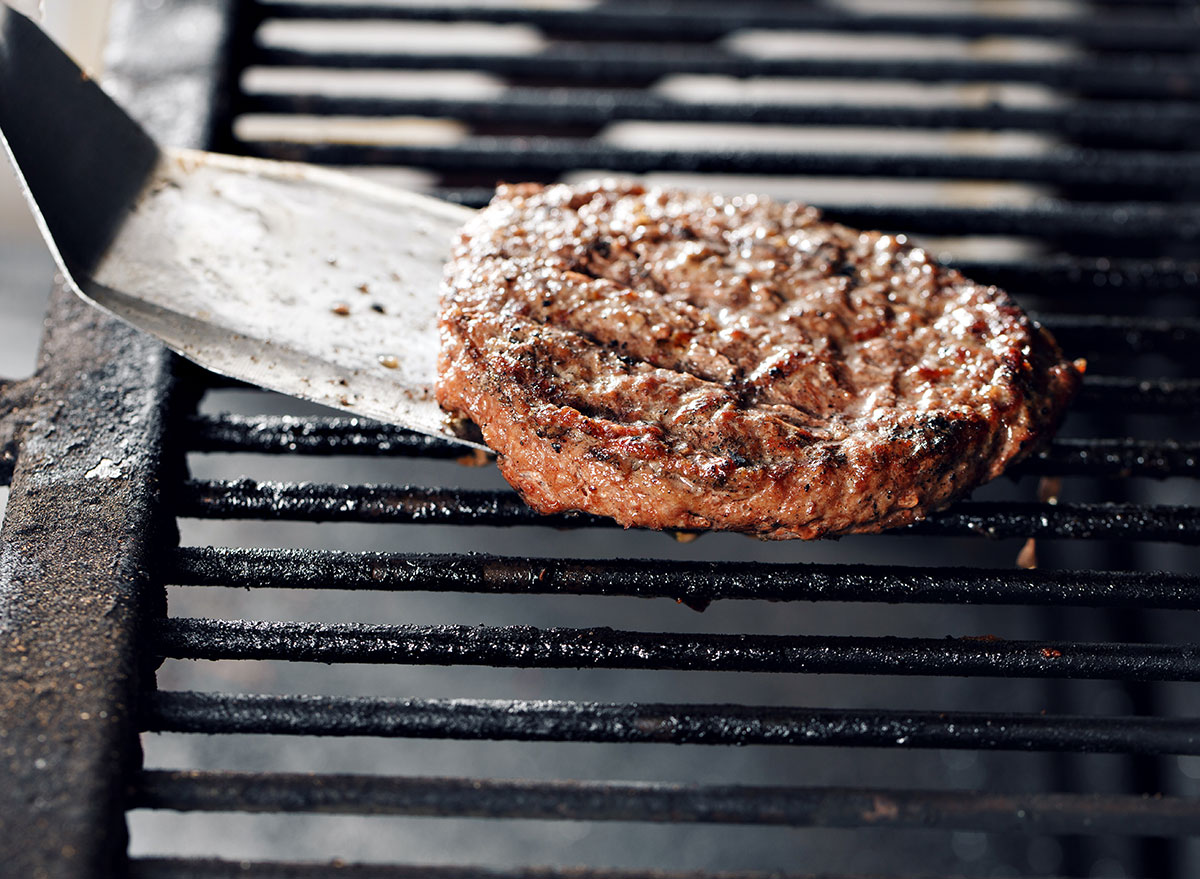
“Cook your burger in a cast-iron pan or a flat-top grill. (When you grill burgers on grill grates, a lot of the fat and meat juices drip away.) And don’t keep flipping it over and over,” Wilson says. “Make sure the surface is sizzling hot, and leave it alone until it gets a beautiful, caramelized crust. Turn once. If you keep turning it, all the juices will come out, and you will not get that nice crust.”
When it comes to burgers, the less you touch them, the tastier and juicier they’ll turn out. And if you’re using a traditional grill, cook your burgers with the lid up, over a medium flame—enough heat to give the patties a nice char, but not so much that you cook the outside before the center of the burger reaches a perfect pink.
And whatever you do, don’t cut the burgers to test them. Slicing open a burger to peek inside will give you a good indication of doneness, but it will also decimate an otherwise pristine piece of meat. So, do it like the pros and use a meat thermometer. Touch and appearance can serve as rough indicators, but ultimately, it’s the internal temperature that determines the doneness of meat.
Sauce simply
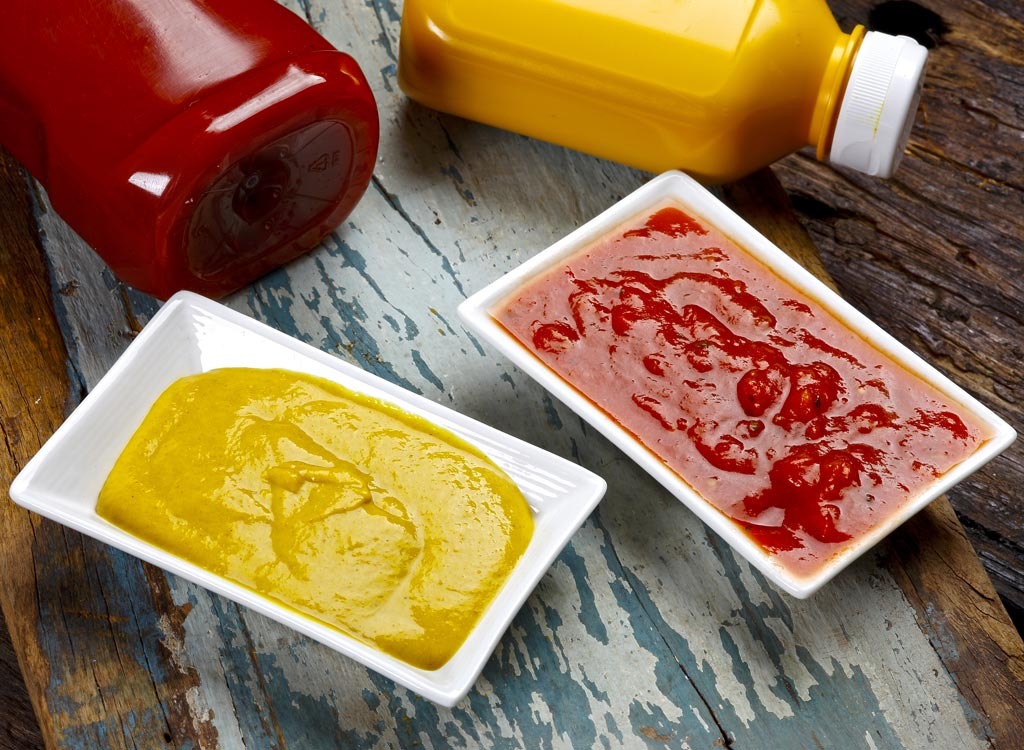
“Use only ketchup, mustard, and mayonnaise,” Wilson says. “This trio adds sweetness, acidity, richness, and flavor. Put on a little bit more than you think you need.”
Top it right
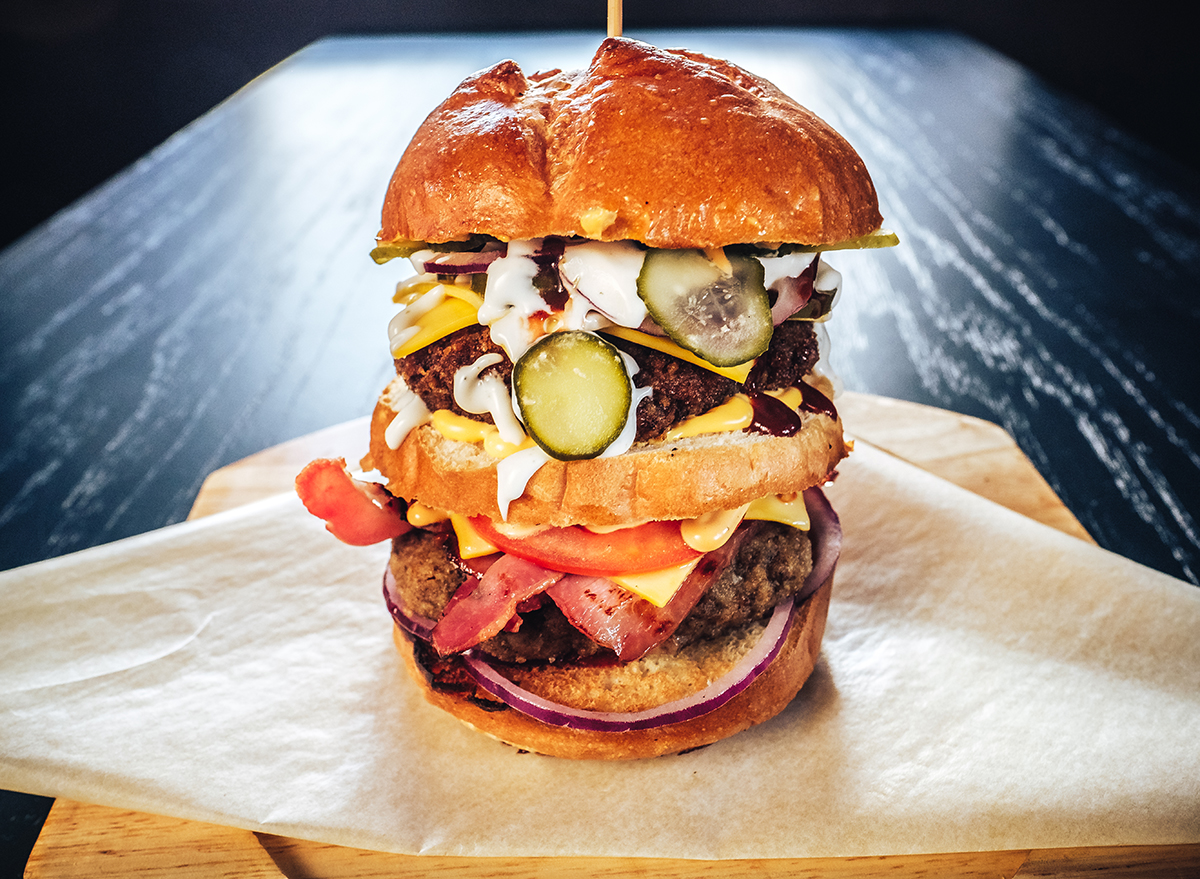
“A slice of cheddar is best. Pickles are an essential part of any burger. They add acid, which helps counteract the fattiness of the meat,” Wilson says. “Lettuce and tomato add freshness, complementing the richness of the patty.”
If you’re going the traditional route and adding cheese to the top of your burgers, don’t wait until you’re sitting down to do so. To make sure it melts, add it as soon as you flip the burger.
Eat it upside down

“Grab the burger by placing your fingers underneath the bottom bun and your thumbs on the top, and then bring it to your mouth in an arc,” Wilson says. “As a young burger-eater, I found it much more natural to pick it up this way and bring it to my mouth upside-down because the heavier ingredients are usually closer to the bottom bun rather than the top. This method also helps to maintain the integrity of the bottom bun, which may have absorbed some of the juices from the meat.”
And for more cooking tricks, don’t miss these 52 Life-Changing Kitchen Hacks That’ll Make You Enjoy Cooking Again.
